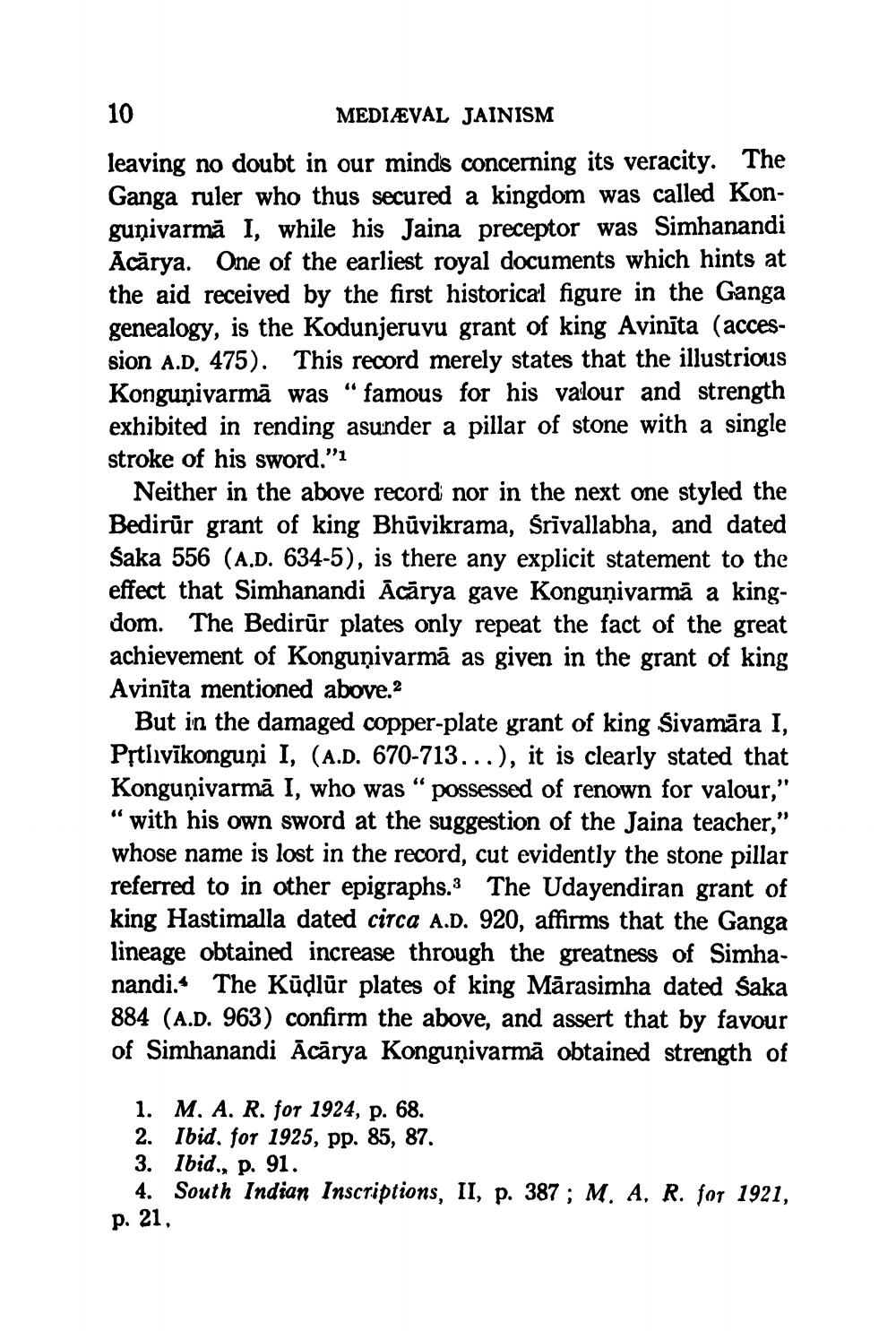________________
10
MEDIÆVAL JAINISM leaving no doubt in our minds concerning its veracity. The Ganga ruler who thus secured a kingdom was called Konguņivarmă I, while his Jaina preceptor was Simhanandi Acārya. One of the earliest royal documents which hints at the aid received by the first historical figure in the Ganga genealogy, is the Kodunjeruvu grant of king Avinīta (accession A.D. 475). This record merely states that the illustrious Kongunivarmā was “famous for his valour and strength exhibited in rending asunder a pillar of stone with a single stroke of his sword."1
Neither in the above record nor in the next one styled the Bedirur grant of king Bhūvikrama, Srivallabha, and dated Saka 556 (A.D. 634-5), is there any explicit statement to the effect that Simhanandi Ācārya gave Konguņivarmā a kingdom. The Bedirür plates only repeat the fact of the great achievement of Konguņivarmā as given in the grant of king Avinīta mentioned above.?
But in the damaged copper-plate grant of king Sivamāra I, Pętlivikonguni I, (A.D. 670-713...), it is clearly stated that Konguņivarmā I, who was " possessed of renown for valour," " with his own sword at the suggestion of the Jaina teacher," whose name is lost in the record, cut evidently the stone pillar referred to in other epigraphs. The Udayendiran grant of king Hastimalla dated circa A.D. 920, affirms that the Ganga lineage obtained increase through the greatness of Simhanandi. The Kūdlūr plates of king Mārasimha dated Saka 884 (A.D. 963) confirm the above, and assert that by favour of Simhanandi Ācārya Konguņivarmā obtained strength of
1. M. A. R. for 1924, p. 68. 2. Ibid. for 1925, pp. 85, 87. 3. Ibid., p. 91.
4. South Indian Inscriptions, II, p. 387 ; M. A, R. for 1921, p. 21.




